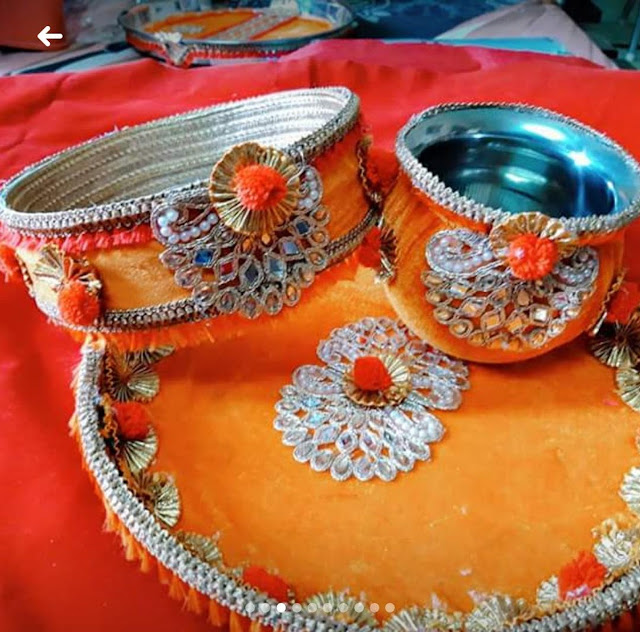Primary links arise
The extent of harmonious rapport between two people will depend on the type, the number, and the strength of the primary and secondary links among four cornerstones across their horoscopes.
Ascendant to Ascendant (Physical & external environment)
Moon to Moon (shared taste)
sun to sun (soul mates)
Venus to Venus (enjoyments)
Cornerstone analysis interprets the nature of the interaction of the innate tendencies (vasnas) of two people.
whether or not a relationship such as marriage will persist is determined directly by karma and indirectly by Vasnas.
Marital Karma is examined by scrutinizing a horoscope's 7th bhava, 7th lord and karaka of marriage.
It is only in the context of vasna contact that we assert that harmony will flourish with difficulty in the lives of any couple that lacks at least one pair of cornerstone that are agreeably placed relative to one another
Secondary links arise through the cross contact between the two horoscope of any two of the four cornerstone of the relationship.
Six pairs of secondary links arise
Ascendant to Sun
Ascendant to Moon
Ascendant to Venus
Sun and Moon
Sun and Venus
Moon and Venus
| Name | Definition |
| Associates | Two
Grahas in the same rashi (one-one counted from each other) |
| Opposites | Two Grahas in the opposite rashi |
| Active Supporters | Two Grahas in the rashis that are Five-Nine as counted from each other |
| Secret Supporters | Two Grahs in the rashis that are Three-Eleven as counted from each other |
| Contrast | Two grahas in rashis that are Four-ten as counted from each other |
| Active Adversaries | Two Grahas in rashis that are Six-Eight as counted from each other |
| Secret Adversaries | Two grahas in rashis that are Two Twelve as counted from each other |
The extent of harmonious rapport between two people will depend on the type, the number, and the strength of the primary and secondary links among four cornerstones across their horoscopes.
A stronger possibility for a harmonious relationship exists when a plurality of supportive connections exists among the relationship cornerstones. The greater the number of primary and mutual secondary associates, opposites and active and secret supporters, and the stronger such activated cornerstones, the more supported attraction between the two people will be.
Likewise as the number of contrasts, active adversaries, secret adversaries increases in a horoscope, the likelihood of congenial interaction decreases.
Couples whose synastry displays all four of the cornerstones as desirable primary links, especially in the form of associates and opposites are exceptionally likely to build a healthy relating foundation. A vasna glue binds them together.
When however, the plurality of interaction among the cornerstone of two horoscope is obstructive, the vasna glue is unlikely to form any rapport strong enough to comfortably support the union through both thick and thin. The owner of such chart are much less likely to live together harmoniously over the long term.
Many couples live together efficiently for decades without any untoward material incidents, but also without passion, when their ascendant agree. They may not, however, share tastes (moon), enjoyments (venus) or be soulmates (Sun)
Jupiter the great benefic:
When the respective Jupiter of two horoscope influence the other cornerstones (and for marriage, if possible, also the seventh bhava and its lord), the two people involve will (all other things being equal), be inclined to influence each other favorably during their liasion.
They will share common constructive values, offer one another good advice, treat each other with respect, learn from each other and otherwise enoble the marriage - provided offcourse Jupiter is strong and preferably rules good bhava.
Given the Jupiter is also a indicator of the guru kripa (divine grace), the contact of jupiter with all the primary factors may well indicate a marriage that has been made in heaven.
Such positive contact becomes particularly strong when Jupiter conjoins or aspect within the orb of 7 1/2 degrees.
Jupiter guides and gives good counsel wherever he gazes, but his influence on a pair of cornerstones will be more pronounced when his influence extends across both horoscope. Jupiter can influence one or several of the four cornerstones of relationship mutually or unilaterally.
When Jupiter one horoscope aspect the Ascendant of other horoscope unilaterally, one implication is that the person will be motivated to intensify the enjoyment of the other person through the physical and environmental circumstances of their relationship
Jupiter guides and gives good counsel wherever he gazes, but his influence on a pair of cornerstones will be more pronounced when his influence extends across both horoscope. Jupiter can influence one or several of the four cornerstones of relationship mutually or unilaterally.
When Jupiter one horoscope aspect the Ascendant of other horoscope unilaterally, one implication is that the person will be motivated to intensify the enjoyment of the other person through the physical and environmental circumstances of their relationship






















